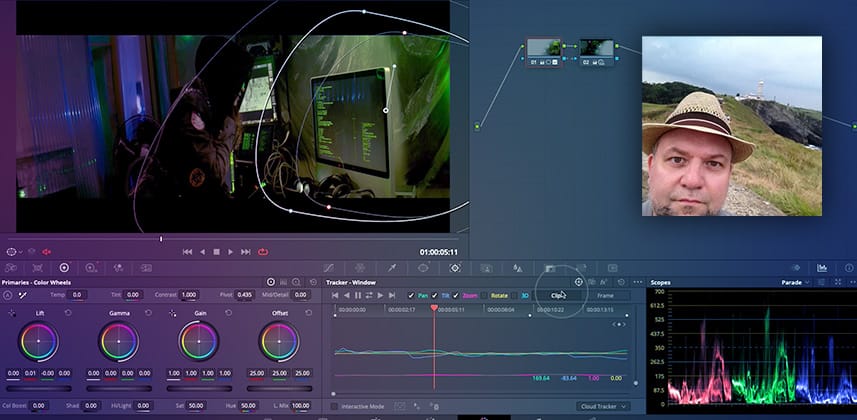| Series |
|---|
Building on the concept of ‘Motivated Vignettes’
Cullen Kelly’s Insight about ‘Motivated Vignettes’ is a terrific exploration of creating naturalistic vignettes. As this topic usually does with professional colorists, that Insight also has a good discussion of Mixing Light members sharing their thoughts on the subject. In particular, this comment caught my attention:
“The first consideration, in my opinion, should be looking at where the light is entering the frame. I think with such a strong light on the cupboards and the counter in front of what looks like a window – that maybe that should be dealt with first to lessen the light ratio, then add the vignette to make the view look at the person.”
Jim Robinson
In my reading of this comment, Jim is talking about moving beyond the vignette – which is about ‘pushing back’ the edges of the screen – and moving into the realm of relighting a scene.
After mastering ‘motivated vignettes’, the next step is tackling ‘motivated Power Windows’
In my practice, I think of ‘motivated Power Windows’ as custom-shaped vignettes. The shape of this custom vignette is driven by sources of light. Sometimes the light source is obvious, motivated by a practical or natural source within the scene. Sometimes it’s an implied light source, where the fixture is outside the frame.
In this Insight, I share my favorite technique for creating motivated Power Windows.
I’ve shared these techniques several times across the history of Mixing Light – but it’s been a few years, and this Insight pulls those ideas together into a single place. I’m also adding this Insight to Cullen’s Flexing Fundamentals series since it’s a natural extension of his thoughts on this topic.
Comments? Questions? Want to share your results?
After watching this Insight, if you want to try your hand at either of the shots I’ve used in this example then you can download them here:
- The Hacker – BRaw shot
- Models Walking at Night – ProRes422 HQ shot
If you’re new to this concept, feel free to give these techniques a shot, upload them to your YouTube or Vimeo account, and embed them in the comments.
Member Content
Sorry... the rest of this content is for members only. You'll need to login or Join Now to continue (we hope you do!).
Need more information about our memberships? Click to learn more.
Membership optionsMember Login


